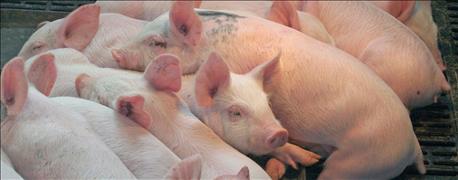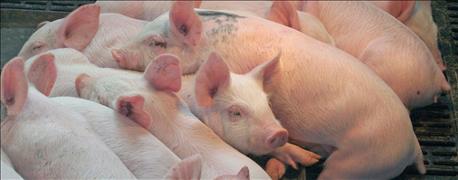November 16, 2016

As I write this article, it is 6 a.m. and 38 degrees F outside. I can’t see my neighbor’s house because of the fog.
Unfortunately, the first thing that comes to my mind is that this is the kind of day that porcine reproductive and respiratory syndrome virus thrives in.
According to initial research done by Scott Dee, Pipestone Veterinary Service’s director of research, PRRS virus can spread for at least 5.5 miles in the air under optimum conditions. Look in all four directions from your barn, and think about how many other barns there are within 5.5 miles.

CONTROL PIG FLOW: All-in, all-out by pig barn site helps control porcine reproductive and respiratory syndrome. Even decreasing the number of ages on a site from three to two makes a big difference. For example, take delivery of weaned pigs every eight to nine weeks instead of every four to five weeks.
Although we can’t control the weather conditions, we can do some things that may help decrease the effects of a PRRS virus introduction. The short list — although far from being all-inclusive — includes PRRS vaccination, biosecurity plans, pig flow and control of secondary diseases.
PRRS vaccination
Vaccinating for PRRS virus in wean-to-finish pigs is a key control strategy for minimizing the effects of a PRRS infection. Although PRRS vaccine will not prevent the introduction of PRRS virus, the clinical signs and detrimental effects associated with PRRS can be diminished. Studies have shown that PRRS vaccination will not only reduce PRRS transmission, but will also improve performance through increased average daily gain and reduced culls when a group of pigs has been infected with PRRS.
PRRS vaccine is one of the best tools in the toolbox to help prevent losses associated with PRRS on a continuous-flow finishing site. Ask your veterinarian if PRRS vaccination is a good decision for your farm.

DR. BRYAN MYERS
Biosecurity
All areas outside of your barn should be considered contaminated. The ground that you walk on also was traveled on by feed trucks, gas trucks, market trucks and too many others to mention. Having a "clean-dirty line" is an effective tool to prevent walking the virus into the barn. Leave your outside clothes and shoes on the dirty side, and change into designated barn clothes and shoes on the clean side.
Control of secondary diseases
Although many diseases can cause significant issues on their own, oftentimes when they are associated with PRRS virus, the clinical effects of other diseases can be much more severe. Diseases such as mycoplasma and circovirus have very effective vaccines, and when vaccinated for correctly, clinical disease can be prevented. Prevention of bacterial diseases is aimed at environmental control, and injectable or water antibiotics as necessary.
Pig flow
Once infected with PRRS virus, pigs can shed the virus into the environment for weeks and even months. Pigs infected with PRRS today can shed the virus to new pigs that may arrive at your farm two months later.
Although vaccination, as discussed above, will minimize the shedding, some virus may get out into the environment, infecting other pigs. Decreasing the number of age groups present on a site will improve the chance of eliminating virus from the site if infected.
Changing pig flow to get to all-in, all-out by site will help with PRRS control, as well as controlling other disease such as influenza. Even if you can’t get to all-in, all-out by site, decreasing the number of ages on a site from three to two makes a big difference. It may be beneficial for your operation to receive weaned pigs every eight to nine weeks instead of every four to five weeks.
Thirty years after PRRS virus was first diagnosed in the U.S., it continues to be the No. 1 disease concern plaguing the swine industry. There are no easy solutions to controlling or preventing PRRS.
Myers is a veterinarian at Pipestone Veterinary Service. Contact him at [email protected].
You May Also Like




